Hyundai i30 vs Suzuki Ignis – Which car suits you better?
Everyday use, family trips or long-distance drives – here’s where the differences show.
Discover whether Hyundai i30 or Suzuki Ignis fits your lifestyle better.
Costs and Efficiency:
When it comes to price and running costs, the biggest differences usually appear. This is often where you see which car fits your budget better in the long run.
Suzuki Ignis has a significantly advantage in terms of price – it starts at 15600 £, while the Hyundai i30 costs 24000 £. That’s a price difference of around 8383 £.
Fuel consumption also shows a difference: Suzuki Ignis manages with 4.90 L and is therefore a bit more efficient than the Hyundai i30 with 5.70 L. The difference is about 0.80 L per 100 km.
Engine and Performance:
Power, torque and acceleration are the classic benchmarks for car enthusiasts – and here, some clear differences start to show.
When it comes to engine power, the Hyundai i30 has a decisively edge – offering 140 HP compared to 83 HP. That’s roughly 57 HP more horsepower.
In acceleration from 0 to 100 km/h, the Hyundai i30 is evident quicker – completing the sprint in 9.60 s, while the Suzuki Ignis takes 12.70 s. That’s about 3.10 s faster.
In terms of top speed, the Hyundai i30 performs somewhat better – reaching 197 km/h, while the Suzuki Ignis tops out at 165 km/h. The difference is around 32 km/h.
There’s also a difference in torque: Hyundai i30 pulls clearly stronger with 253 Nm compared to 107 Nm. That’s about 146 Nm difference.
Space and Everyday Use:
Beyond pure performance, interior space and usability matter most in daily life. This is where you see which car is more practical and versatile.
Both vehicles offer seating for 5 people.
In curb weight, Suzuki Ignis is clearly perceptible lighter – 935 kg compared to 1291 kg. The difference is around 356 kg.
In terms of boot space, the Hyundai i30 offers distinct more room – 395 L compared to 267 L. That’s a difference of about 128 L.
In maximum load capacity, the Hyundai i30 performs a bit better – up to 1301 L, which is about 201 L more than the Suzuki Ignis.
When it comes to payload, Hyundai i30 distinct takes the win – 509 kg compared to 395 kg. That’s a difference of about 114 kg.
Who wins the race?
The Hyundai i30 proves to be dominates this comparison and therefore becomes our DriveDuel Champion!
Hyundai i30 is the better all-rounder in this comparison.

Hyundai i30
Hyundai i30
The Hyundai i30 stands out in the hatchback segment with its sleek design and modern features. It offers a comfortable ride with a well-crafted interior that caters to both driver and passengers. With its emphasis on safety and technology, the i30 provides a balanced driving experience suitable for urban and suburban environments.
details @ hyundai.news
@ hyundai.news
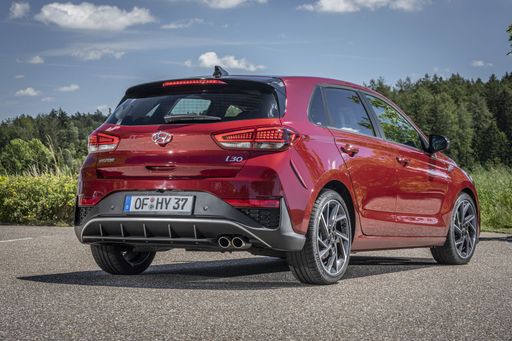 @ hyundai.news
@ hyundai.news
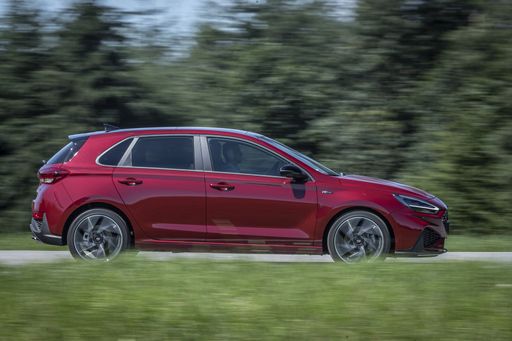 @ hyundai.news
@ hyundai.news
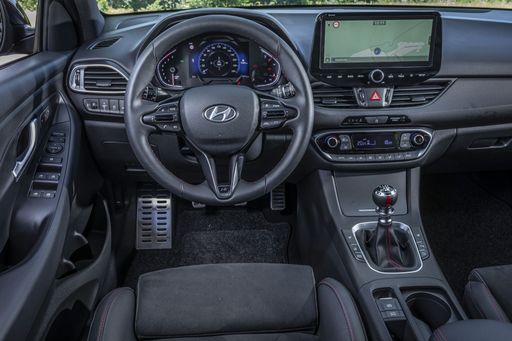 @ hyundai.news
@ hyundai.news
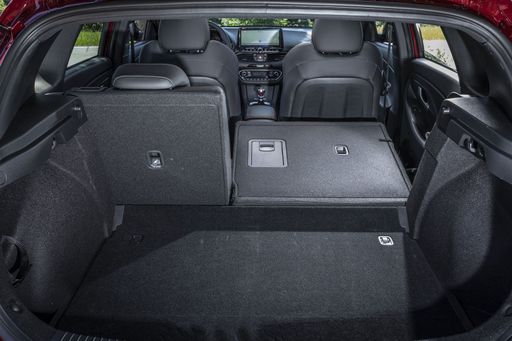 @ hyundai.news
@ hyundai.news
Suzuki Ignis
The Suzuki Ignis is a compact car that stands out with its unique blend of small SUV aesthetics and city-friendly dimensions. Its playful and distinctive design, combined with a practical and elevated driving position, makes it an appealing choice for urban dwellers seeking versatility without compromising on style. Inside, the Ignis offers a surprisingly spacious cabin with innovative storage solutions, making it ideal for those who need a functional yet characterful vehicle.
details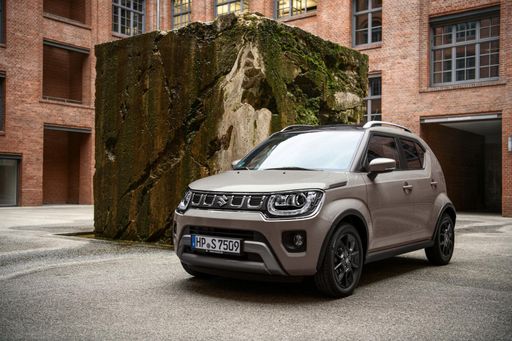 @ Suzuki
@ Suzuki
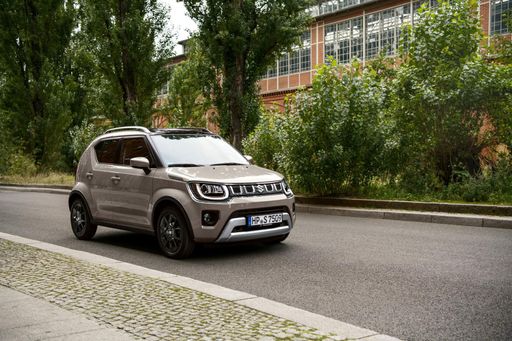 @ Suzuki
@ Suzuki
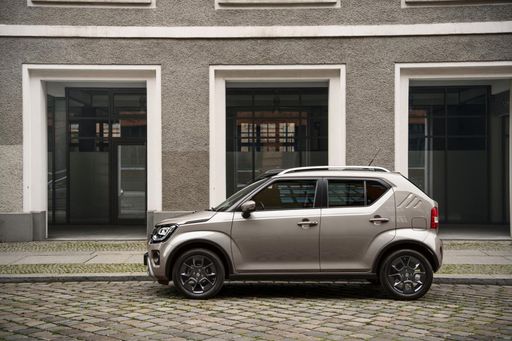 @ Suzuki
@ Suzuki
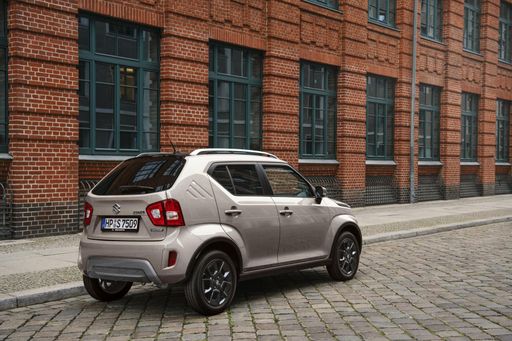 @ Suzuki
@ Suzuki
 @ Suzuki
@ Suzuki

|

|
|
|
|
Costs and Consumption |
|
|---|---|
|
Price
24000 - 29300 £
|
Price
15600 - 19500 £
|
|
Consumption L/100km
5.7 - 6 L
|
Consumption L/100km
4.9 - 5.4 L
|
|
Consumption kWh/100km
-
|
Consumption kWh/100km
-
|
|
Electric Range
-
|
Electric Range
-
|
|
Battery Capacity
-
|
Battery Capacity
-
|
|
co2
130 - 136 g/km
|
co2
110 - 122 g/km
|
|
Fuel tank capacity
50 L
|
Fuel tank capacity
30 - 32 L
|
Dimensions and Body |
|
|---|---|
|
Body Type
Hatchback
|
Body Type
SUV
|
|
Seats
5
|
Seats
4 - 5
|
|
Doors
5
|
Doors
5
|
|
Curb weight
1291 - 1407 kg
|
Curb weight
935 - 995 kg
|
|
Trunk capacity
395 L
|
Trunk capacity
204 - 267 L
|
|
Length
4340 mm
|
Length
3700 mm
|
|
Width
1795 mm
|
Width
1690 mm
|
|
Height
1455 mm
|
Height
1605 mm
|
|
Max trunk capacity
1301 L
|
Max trunk capacity
1086 - 1100 L
|
|
Payload
463 - 509 kg
|
Payload
335 - 395 kg
|
Engine and Performance |
|
|---|---|
|
Engine Type
Petrol, Petrol MHEV
|
Engine Type
Petrol MHEV
|
|
Transmission
Manuel, Automatic
|
Transmission
Manuel, Automatic
|
|
Transmission Detail
Manual Gearbox, Dual-Clutch Automatic
|
Transmission Detail
Manual Gearbox, CVT
|
|
Drive Type
Front-Wheel Drive
|
Drive Type
Front-Wheel Drive, All-Wheel Drive
|
|
Power HP
100 - 140 HP
|
Power HP
83 HP
|
|
Acceleration 0-100km/h
9.6 - 13.1 s
|
Acceleration 0-100km/h
12.7 - 12.8 s
|
|
Max Speed
178 - 197 km/h
|
Max Speed
155 - 165 km/h
|
|
Torque
172 - 253 Nm
|
Torque
107 Nm
|
|
Number of Cylinders
3 - 4
|
Number of Cylinders
4
|
|
Power kW
74 - 103 kW
|
Power kW
61 kW
|
|
Engine capacity
998 - 1482 cm3
|
Engine capacity
1197 cm3
|
General |
|
|---|---|
|
Model Year
2024
|
Model Year
2020
|
|
CO2 Efficiency Class
D, E
|
CO2 Efficiency Class
C, D
|
|
Brand
Hyundai
|
Brand
Suzuki
|
What drive types are available for the Hyundai i30?
Available configurations include Front-Wheel Drive.
The prices and data displayed are estimates based on German list prices and may vary by country. This information is not legally binding.
